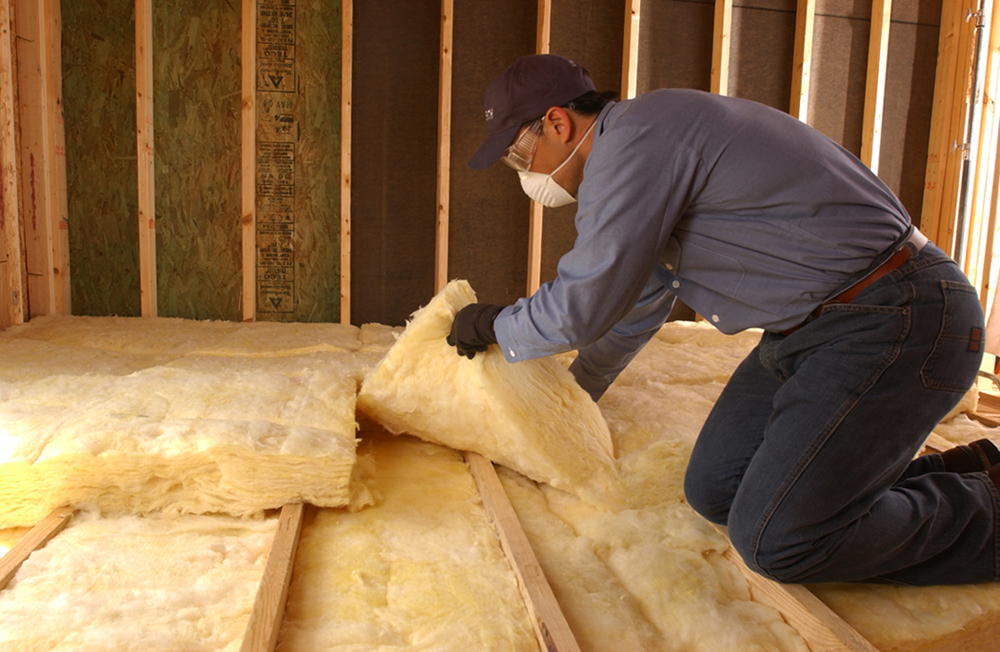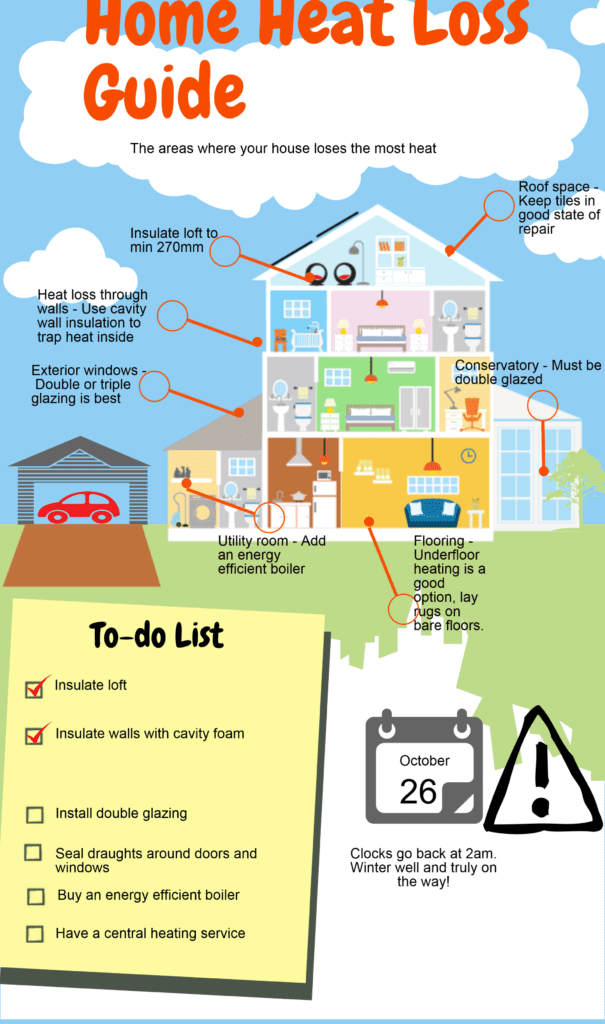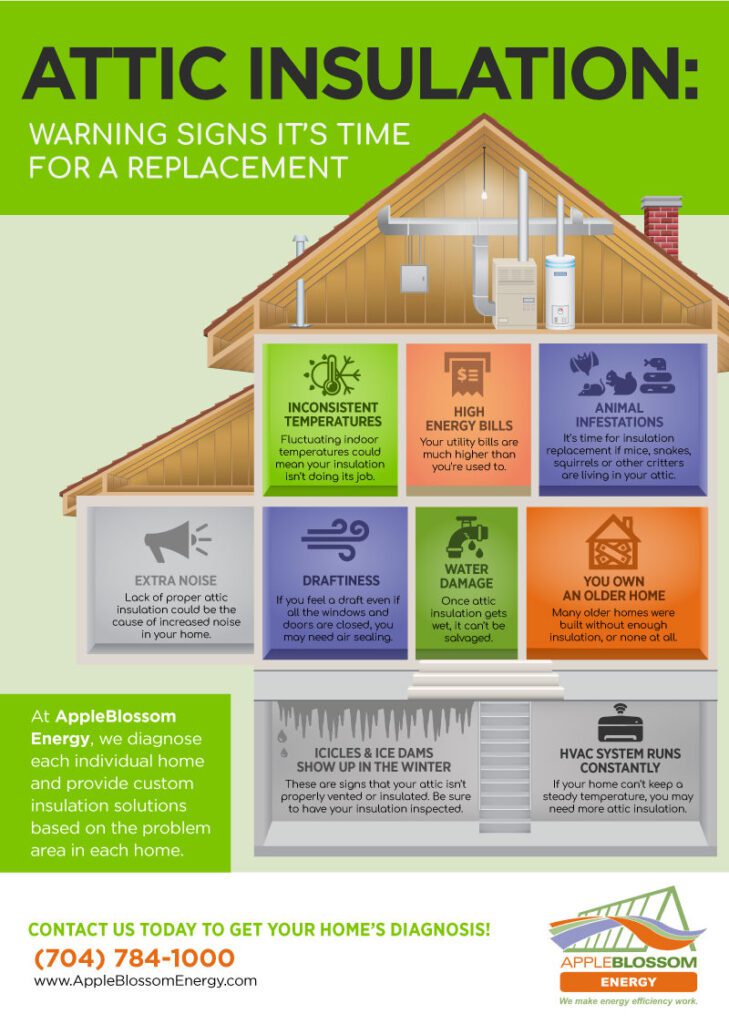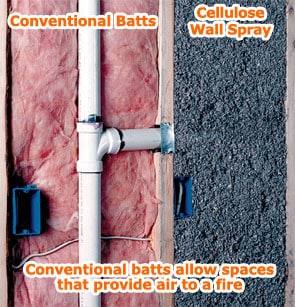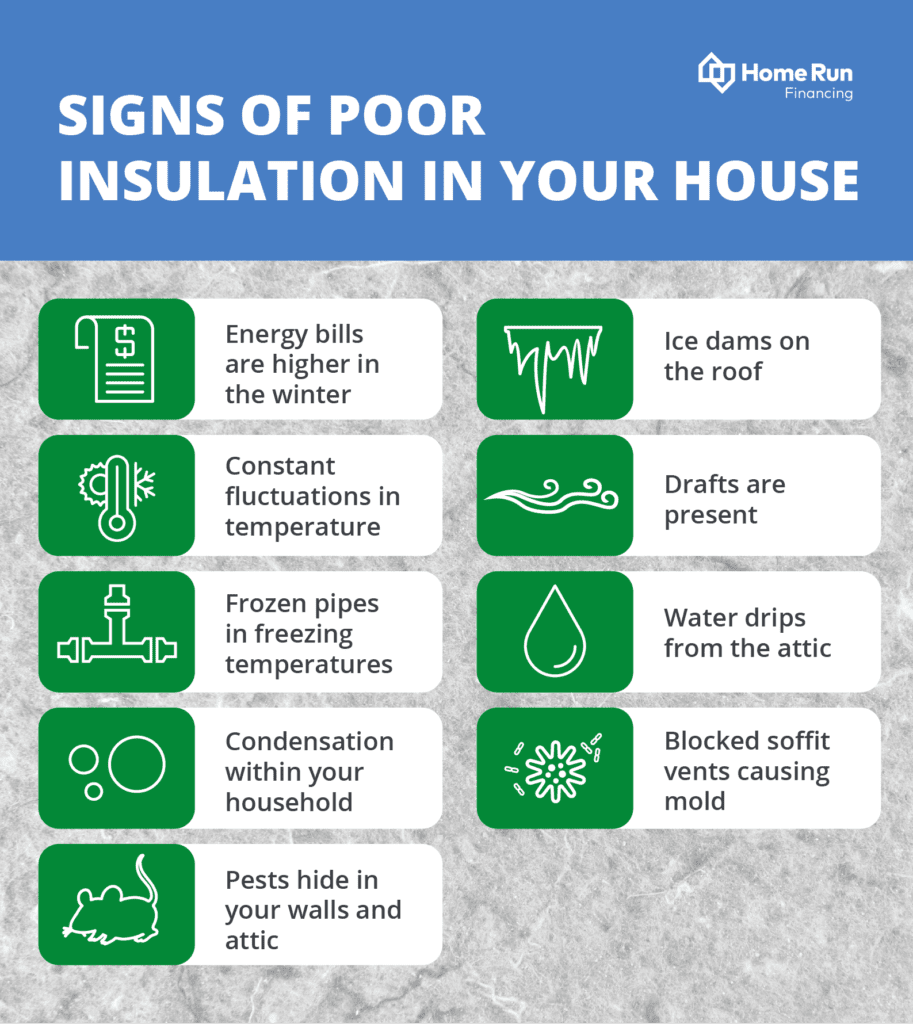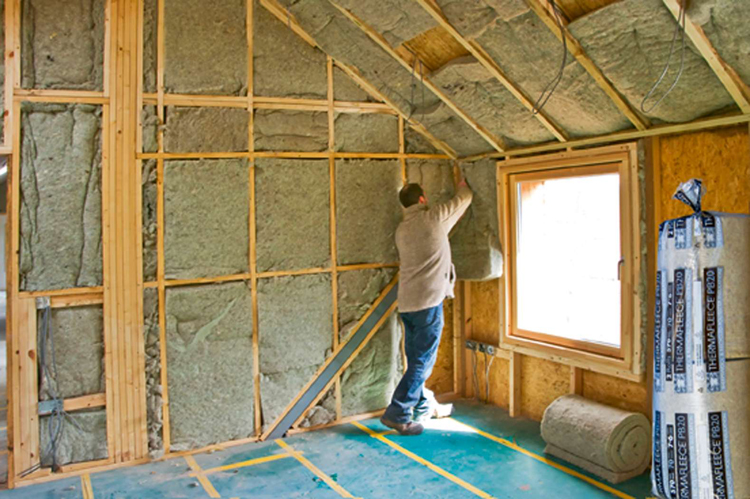Are you considering adding new insulation to your home but unsure if it can be installed over existing insulation? The answer is yes! Adding new insulation over old is a viable option, and it can bring numerous benefits to your home. This article will explore the advantages of installing new insulation over existing insulation, debunking common myths along the way. So, if you’re wondering whether it’s possible and worthwhile to add new insulation over old, keep reading and discover why it could be the right choice for your home.


Reasons for Adding New Insulation Over Old
Increasing Energy Efficiency
Adding new insulation over old can significantly increase the energy efficiency of your home. Insulation acts as a barrier to heat transfer, preventing the loss of heated or cooled air from your living spaces. By adding new insulation over old, you can improve the overall insulation value of your home and reduce energy waste. This can lead to lower heating and cooling costs and a more comfortable living environment.
Improving Comfort
Another reason to add new insulation over old is to improve the overall comfort of your home. Insufficient insulation can result in drafts, cold spots, and inconsistent temperatures throughout your living spaces. By adding new insulation, you can create a more consistent and comfortable indoor environment, ensuring that your home is cozy during the winter and cool during the summer.
Enhancing Soundproofing
If you live in a noisy area or have noisy neighbors, adding new insulation over old can help enhance soundproofing. Insulation can absorb and block sound waves, reducing the amount of noise that enters or exits your home. By adding additional insulation, you can create a quieter and more peaceful living environment, providing you with the privacy and tranquility you desire.
Preventing Moisture Issues
Old insulation may become damaged or deteriorate over time, leading to moisture issues such as condensation or mold growth. By adding new insulation over old, you can prevent these moisture issues from occurring or worsening. New insulation can act as a moisture barrier, preventing the buildup of moisture and protecting your home from potential damage.
Considerations Before Adding New Insulation
Assess Existing Insulation
Before adding new insulation, it is important to assess the condition of the existing insulation. Determine if it is in good condition, free from damage or moisture. Insulation that is wet, moldy, or damaged should be removed and replaced before adding new insulation.
Determining Compatibility
Not all types of insulation are compatible with each other. It is important to determine the compatibility between the existing insulation and the new insulation you plan to add. Some types of insulation may not adhere well to each other, leading to gaps and reduced effectiveness. Consult with a professional or manufacturer guidelines to ensure compatibility.
Identifying Existing Problems
Take the time to identify any existing problems in your home that may impact the installation of new insulation. This includes identifying air leaks, moisture issues, or inadequate ventilation. Addressing these problems before adding new insulation will ensure the best results and prevent future issues.
Evaluating Airflow and Moisture
Assess the airflow and moisture levels in your home to determine if they are within a healthy range. Poor airflow or excessive moisture can lead to issues with insulation effectiveness and can potentially cause mold or mildew growth. Take steps to improve ventilation and address any moisture issues before adding new insulation.
Considering Cost and ROI
Before adding new insulation, consider the cost and potential return on investment (ROI). Evaluate the cost of materials, labor, and any additional improvements that may be required. Compare this with the potential energy savings and other benefits gained from adding new insulation. This will help determine if the investment is financially viable and worth pursuing.


Types of Old Insulation
Fiberglass Insulation
Fiberglass insulation is one of the most common types of insulation found in homes. It consists of small fibers made of glass that are woven together. Fiberglass insulation is known for its thermal resistance and sound absorption properties. It is relatively easy to install and can be added over existing insulation with ease.
Cellulose Insulation
Cellulose insulation is made from recycled paper treated with fire retardant chemicals. It is a popular choice for its eco-friendly qualities and excellent insulation performance. Cellulose insulation can be blown or sprayed into cavities, making it a suitable option for adding new insulation over old.
Foam Insulation
Foam insulation, such as spray foam, is a versatile option for adding insulation over old. It expands and hardens upon application, forming a continuous layer of insulation. Foam insulation provides excellent thermal resistance and also seals air leaks, improving energy efficiency.
Mineral Wool Insulation
Mineral wool insulation is made from natural materials, including rock or slag. It is known for its excellent fire resistance and sound absorption properties. Mineral wool insulation can be installed in batts or rolls and is suitable for adding new insulation over existing insulation.
Methods for Adding New Insulation Over Old
Blow-in Insulation
Blow-in insulation involves using a machine to blow loose insulation material into wall cavities, attics, or other hard-to-reach areas. This method is ideal for adding new insulation over old, as it can fill gaps and ensure uniform coverage. Blow-in insulation is commonly used with materials such as cellulose or fiberglass.
Spray Foam Insulation
Spray foam insulation is applied using a special spraying device that combines two chemical components, creating a foam that expands and hardens. It can be used to fill gaps, cracks, or cavities and provides excellent insulation and air sealing properties. Spray foam insulation can be added over existing insulation to enhance its effectiveness.
Batts and Rolls Insulation
Batts and rolls insulation is a popular option for adding new insulation over old. It consists of pre-cut panels or rolls of insulation material that are placed in walls, attics, or floors. Batts and rolls are available in various materials, such as fiberglass or mineral wool, and offer ease of installation and uniform coverage.
Rigid Board Insulation
Rigid board insulation is a type of insulation that comes in rigid panels or boards. It is commonly made from materials such as polyisocyanurate, polystyrene, or polyurethane. Rigid board insulation can be installed over existing insulation to provide additional thermal resistance and structural integrity.
Reflective Insulation
Reflective insulation is a type of insulation that incorporates reflective materials, such as aluminum foil, to reflect radiant heat. It can be installed in attics, roofs, or walls and is ideal for adding new insulation over old. Reflective insulation helps reduce heat transfer and enhances energy efficiency.
Radiant Barrier Insulation
Radiant barrier insulation is designed to reflect radiant heat rather than resist it. It typically consists of a highly reflective material, such as aluminum foil, and is commonly installed in attics. Radiant barrier insulation can be added over existing insulation to enhance the overall thermal performance of the space.


Preparation Steps
Inspecting the Existing Insulation
Before adding new insulation, carefully inspect the existing insulation for any signs of damage, moisture, or mold. It is essential to address these issues before proceeding with the installation of new insulation.
Removing Damaged or Wet Insulation
If the existing insulation is wet, damaged, or moldy, it should be removed and replaced. Wet insulation can lead to further issues, such as mold growth or reduced insulation effectiveness.
Cleaning the Area
Ensure the area where new insulation will be added is clean and free from debris. Clear any obstacles or obstructions that may hinder the installation process.
Addressing Air Leaks and Ventilation
Take the time to address any air leaks or ventilation issues before adding new insulation. Sealing air leaks and improving ventilation will enhance the overall effectiveness of the insulation and prevent future problems.
Creating a Moisture Barrier
Consider installing a moisture barrier, such as a vapor barrier, before adding new insulation. This will help prevent moisture from penetrating the insulation and causing damage.
Sealing Gaps and Cracks
Inspect the area for any gaps or cracks that can compromise the insulation’s effectiveness. Seal these gaps and cracks using appropriate materials, such as caulk or foam sealants.
Installation Process
Choosing the Right Insulation
Select the appropriate type of insulation based on your specific needs and the compatibility with the existing insulation. Consider factors such as insulation value, fire resistance, soundproofing capabilities, and ease of installation.
Following Manufacturer’s Instructions
Carefully read and follow the manufacturer’s instructions for the installation of the chosen insulation. Different insulation materials may have specific installation requirements and guidelines that must be followed for optimal performance.
Covering Existing Insulation Uniformly
Ensure that the new insulation is installed uniformly, covering the existing insulation evenly. This will eliminate any gaps or areas with insufficient insulation, maximizing its effectiveness.
Proper Placement Around Obstacles
Pay attention to the proper placement of insulation around obstacles such as electrical wires, pipes, and vents. Take necessary precautions to avoid compressing or covering these obstacles, ensuring their functionality and safety.
Insulating Hard-to-Reach Areas
Take extra care when insulating hard-to-reach areas, such as corners, eaves, and crawl spaces. These areas can often be the source of heat loss or air leaks, so it is essential to ensure proper insulation coverage.
Ensuring Fire Safety
Consider using fire-resistant insulation materials or adding fire barriers in areas where fire safety is a concern, such as near heat sources or in attics. This will help protect your home and enhance overall safety.
Considering Professional Installation
If you are unsure or uncomfortable with the installation process, it is advisable to seek professional assistance. Professional installers have the knowledge and experience to ensure proper installation and maximize the benefits of adding new insulation.


Safety Precautions
Wearing Protective Gear
When installing new insulation, it is important to wear appropriate protective gear, such as gloves, safety goggles, and a mask. This will help protect you from any potential irritants or hazards associated with the insulation materials.
Using Proper Tools
Use the appropriate tools and equipment for the installation process. This includes insulation knives, staplers, or other recommended tools to ensure accurate and safe installation.
Maintaining Good Ventilation
Ensure that the area where insulation is being installed has adequate ventilation. This will help dissipate any fumes or airborne particles associated with the insulation materials and maintain good air quality.
Avoiding Electrical Hazards
Take precautions when working around electrical wiring or fixtures. Turn off the power to the area where insulation is being installed to avoid any electrical hazards or accidents.
Preventing Fire Risks
Follow proper fire safety practices when installing insulation. Avoid installing insulation near heat sources or exposed flames, and consider using fire-resistant materials in areas where fire safety is a concern.
Common Mistakes to Avoid
Adding Too Much Insulation
Adding an excessive amount of insulation can lead to problems such as reduced airflow or inadequate ventilation. It is important to follow recommended insulation thickness guidelines and ensure proper installation.
Ignoring Compatibility
Neglecting to consider compatibility between existing and new insulation can result in reduced effectiveness and potential issues with installation. Be sure to choose insulation materials that are compatible with each other to achieve the best results.
Neglecting to Address Existing Issues
Adding new insulation without addressing existing problems such as air leaks or moisture issues can lead to further complications. Take the time to address these issues before adding new insulation to ensure long-lasting performance.
Incomplete Coverage
Inadequate coverage and gaps in insulation can result in reduced energy efficiency and wasted resources. Ensure that the insulation is installed uniformly and covers all areas properly for optimal performance.
Overlooking Proper Sealing
Sealing gaps, cracks, and air leaks is crucial for maximizing insulation effectiveness. Neglecting to properly seal these areas can result in heat loss, reduced comfort, and increased energy consumption.


Benefits of Adding New Insulation Over Old
Improved Energy Efficiency
Adding new insulation over old can significantly improve the energy efficiency of your home. It helps reduce heat loss during the winter and heat gain during the summer, leading to lower energy consumption and decreased utility bills.
Enhanced Thermal Comfort
By adding new insulation, you can improve the overall thermal comfort of your home. Insulation helps maintain consistent temperatures throughout your living spaces, eliminating drafts, cold spots, and hot spots.
Reduced Noise Pollution
One of the benefits of adding new insulation over old is the reduction of noise pollution. Insulation absorbs sound waves, creating a quieter and more peaceful living environment, whether you live in a noisy neighborhood or want to create a soundproofed room.
Prevention of Mold and Mildew
New insulation can help prevent moisture issues, such as condensation or mold growth. This is especially important if your existing insulation has been damaged or shows signs of moisture infiltration. Proper insulation can create a barrier against moisture, preventing the growth of mold and mildew.
Increased Property Value
Adding new insulation over old can increase the value of your property. Energy-efficient homes are highly sought after by buyers, and proper insulation is a significant contributing factor to a home’s energy efficiency. By investing in new insulation, you can potentially increase the resale value of your home.
Conclusion
Adding new insulation over old is a practical and beneficial home improvement project. It enhances energy efficiency, improves comfort, enhances soundproofing, prevents moisture issues, and provides numerous other benefits. Before undertaking this project, assess your existing insulation, determine compatibility, evaluate existing problems, consider airflow and moisture, and weigh the cost and potential return on investment. Choose the appropriate insulation materials and method, and follow proper preparation and installation procedures. Take safety precautions, avoid common mistakes, and enjoy the benefits of improved energy efficiency, enhanced comfort, reduced noise pollution, and increased property value.

